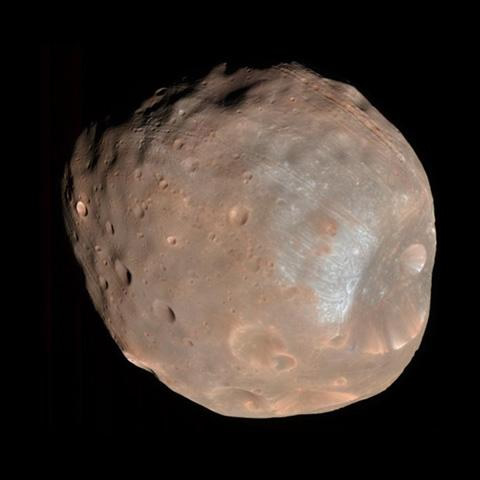Mars at a Glance
Physical Characteristics
- Average diameter 6,780 kilometers (4,212 miles); about half the size of Earth, but twice the size of Earth's Moon
- Mass 1/10th of Earth's; gravity only 38 percent as strong as Earth's
- Density 3.9 times greater than water (compared to Earth's 5.5 times greater than water)
- No planet-wide magnetic field detected; only localized ancient remnant fields in various regions
Orbit
- Fourth planet from the Sun, the next beyond Earth
- About 1.5 times farther from the Sun than Earth is
- Orbit elliptical; distance from Sun varies from a minimum of 206.7 million kilometers (128.4 millions miles) to a maximum of 249.2 million kilometers (154.8 million miles); average distance from the Sun 227.7 million kilometers (141.5 million miles)
- Revolves around Sun once every 687 Earth days
- Rotation period (length of day) 24 hours, 39 min, 35 sec (1.027 Earth days)
- Poles tilted 25 degrees, creating seasons similar to Earth's
Environment
- Atmosphere composed chiefly of carbon dioxide (95.3%), nitrogen (2.7%) and argon (1.6%)
- Surface atmospheric pressure less than 1/100th that of Earth's average
- Surface winds up to 80 miles per hour (40 meters per second). Local, regional and global dust storms; also whirlwinds called dust devils.
- Surface temperature averages -53 C (-64 F); varies from -128 C (-199 F) during polar night to 27 C (80 F) at equator during midday at closest point in orbit to Sun
Features
- Highest point is Olympus Mons, a huge shield volcano about 26 kilometers (16 miles) high and600 kilometers (370 miles) across; has about the same area as Arizona
- Canyon system of Valles Marineris is largest and deepest known in solar system; extends morethan 4,000 kilometers (2,500 miles) and has 5 to 10 kilometers (3 to 6 miles) relief from floors totops of surrounding plateaus
Moons
- Two irregularly shaped moons, each only a few kilometers wide. Larger moon named Phobos ("fear"); smaller is Deimos ("terror"), named for attributes personi-fied in Greek mythology as sons of the god of war.
 |
 |
(credits: JPL - NASA - All rights reserved)
